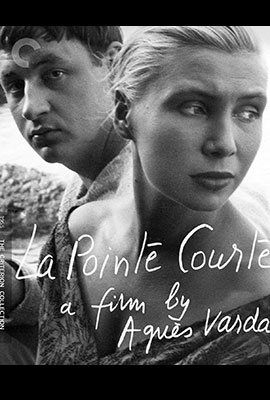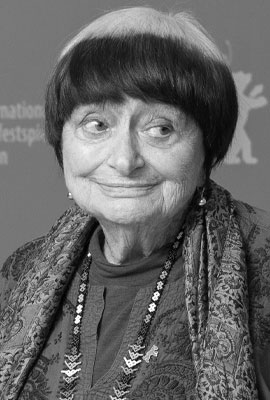
(1955)
directed by Agnes Varda
“La Pointe Courte” sets two stories side by side. There is no obvious connection between the two stories. Silvia Monfort and Philippe Noiret play a young married couple returning to his hometown, a Mediterranean fishing village, after four years together in Paris. Their marriage is clearly falling apart. They are both working to try and save their marriage, however. Their complex dialogue recalls the work of Ingmar Bergman. Varda said that she wrote the screenplay “Just the way a person writes their first book. When I’d finished writing it, I thought to myself, ‘I’d like to shoot that script,’ and so some friends and I formed a cooperative to make it.”
The story of the young couple from Paris is interspersed with the story of everyday life in the fishing village. We witness the lives of the fisherman and their families. Varda said that she was not interested in accounts of people in power, instead she was “much more interested in the people who fight for their own life.” The Parisian couple’s problems somehow seem less important in the context of the ancient life of the fishing village. The meaning of the film is subtle. Viewers must draw their own conclusions as the two stories unfold side by side.
Varda was influenced by the philosophy of Gaston Bachelard, under whom she studied at the Sorbonne. She was particularly interested in his theory of “l’imagination des matières” in which certain personality traits were found to correspond to elements in the material world. This idea finds expression in “La Pointe Courte.” The clash of the couple’s personalities is mirrored in objects such as wood and steel and woven nets.
“La Pointe Courte” was edited by Varda’s friend and fellow filmmaker Alain Resnais. He said he was initially reluctant to work on the film because it was “so nearly the film he wanted to make himself.” The structure of “La Pointe Courte” is similar to Resnais’ later masterpiece, “Hiroshima mon amour.”
The film was immediately praised by critics. Andre Bazin said, “There is a total freedom to the style, which produces the impression, so rare in the cinema, that we are in the presence of a work that obeys only the dreams and desires of its auteur with no other external obligations.”
Agnès Varda

Agnès Varda, the director of “La Pointe Courte” and “Vagabond,” began her career as a photographer. Agnes Varda’s films are beautifully composed and meticulously photographed. Each maneuver of the camera is a decision and the results are incredibly beautiful.
Varda recalled her background in photography, “I started making films with the sole experience of photography, that is to say, where to place the camera, at what distance, with which lens, and what lights. When I made my first film, ‘La Pointe Courte,’ without experience, without having been an assistant before, and without having gone to film school, I took photographs of everything I wanted to film, photographs that were models for the shots.”
Varda experimented with form, played with concepts of time and memory, and used actual locations. As the only female director of the French New Wave, she introduced a strong feminist point of view. In my opinion, her contributions to the art of film surpass any of her male contemporaries with the possible exception of Robert Bresson.